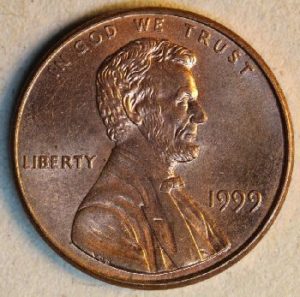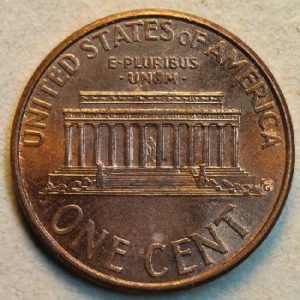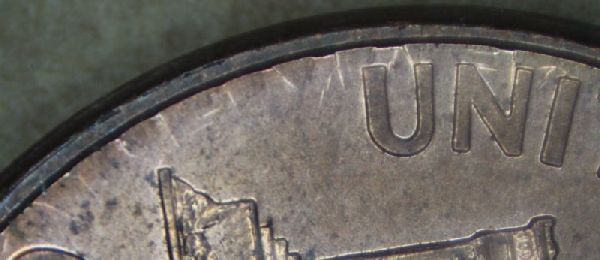Part IV. Die Errors:
Clashed Dies:
Mule Clash
Definition: Clash marks from dies that should never have been paired. Mule clashes were, until recently, considered a 19th century phenomenon. Six are known from this century:
- An 1857 Flying Eagle cent that shows a clash between its obverse die and the obverse die of a $20 double eagle gold coin.
- An 1857 Flying Eagle cent that shows a clash between its reverse die and the reverse die of a Seated Liberty quarter dollar.
- An 1857 Flying Eagle cent that shows a clash between its obverse die and the obverse die of a Seated Liberty half dollar.
- An 1857 Seated Liberty quarter dollar that shows a clash between its reverse die and the reverse die of an 1857 Flying Eagle cent.
- An 1864 2 cent coin that shows a clash between its reverse die and the obverse die of an Indian Head cent.
- An 1870 Shield nickel that shows a clash between its obverse die and the obverse die of an Indian Head cent.
It’s widely suspected that all of these mule clashes are the result of mischief by mint employees.
The latest mule clash was discovered in 2018 by Amy Antone in a pile of cents diverted from pocket change. It appears on the reverse face of a 1999 cent. Appearing on the left side, just inside the design rim, is an arc of incuse, mirror-image letters (“oF AMERIC”). The letters are doubled, documenting two die clashes that were slightly offset from each other. The tops of the letters are slightly cut off, indicating that the die responsible for the clash was slightly misaligned toward the left. The peripheral location of the letters indicates that one of the two dies (presumably the hammer die), was tilted.
It’s not clear whether the two dies were actually installed in a press at the time of the clash. It’s also unclear whether this clash was accidental or intentional. This bizarre clash comes from an 11-year time period (1990-2000) that produced over 34 “radical MAD clashes” in Lincoln cents. All of these clashes are weak, tilted, and often drastically misaligned. The conditions that led to these clashes may have contributed to the production of this mule clash.



